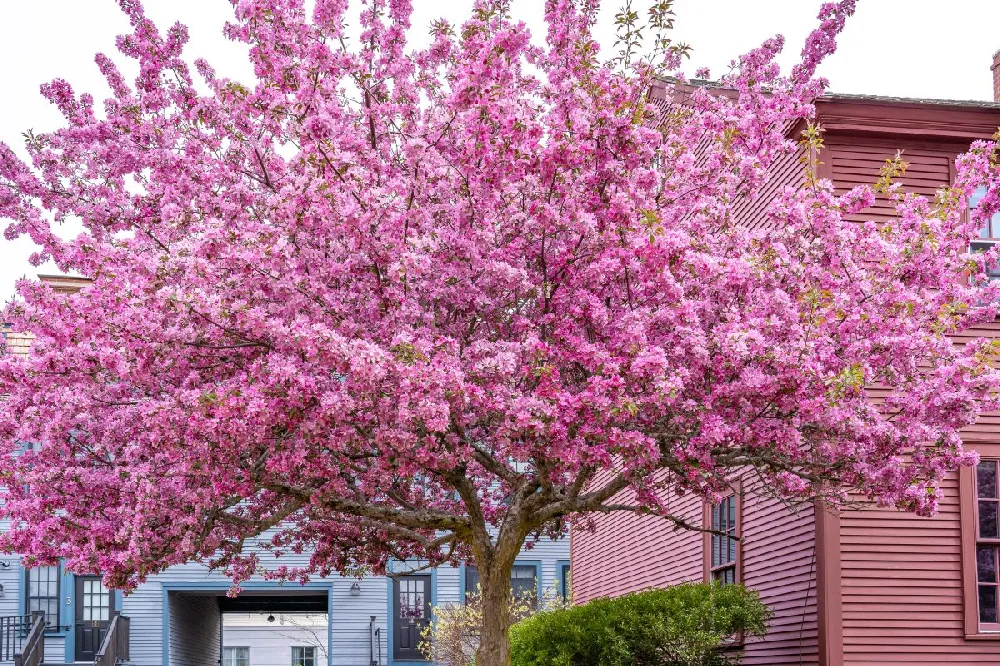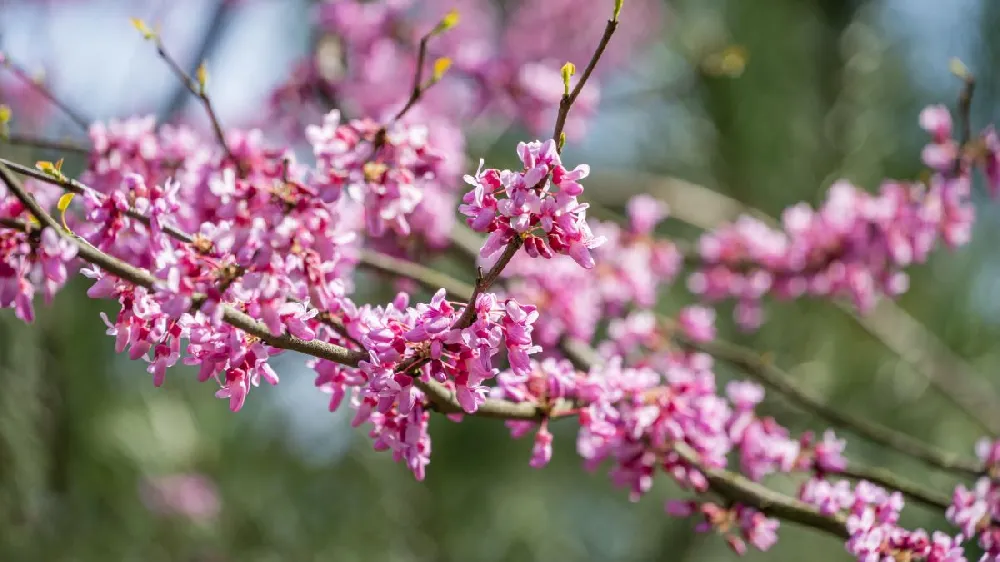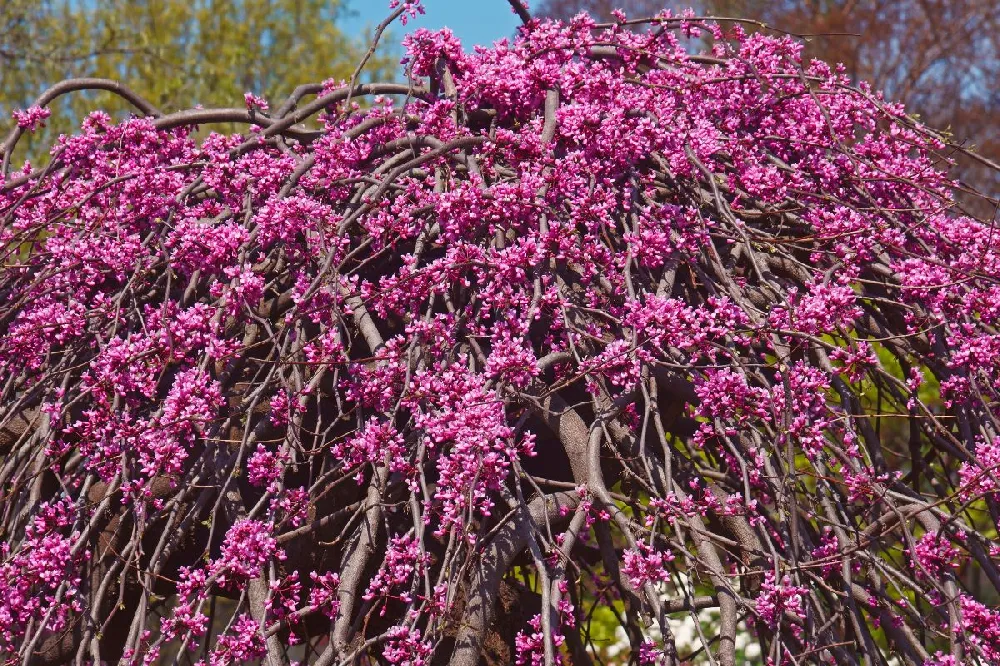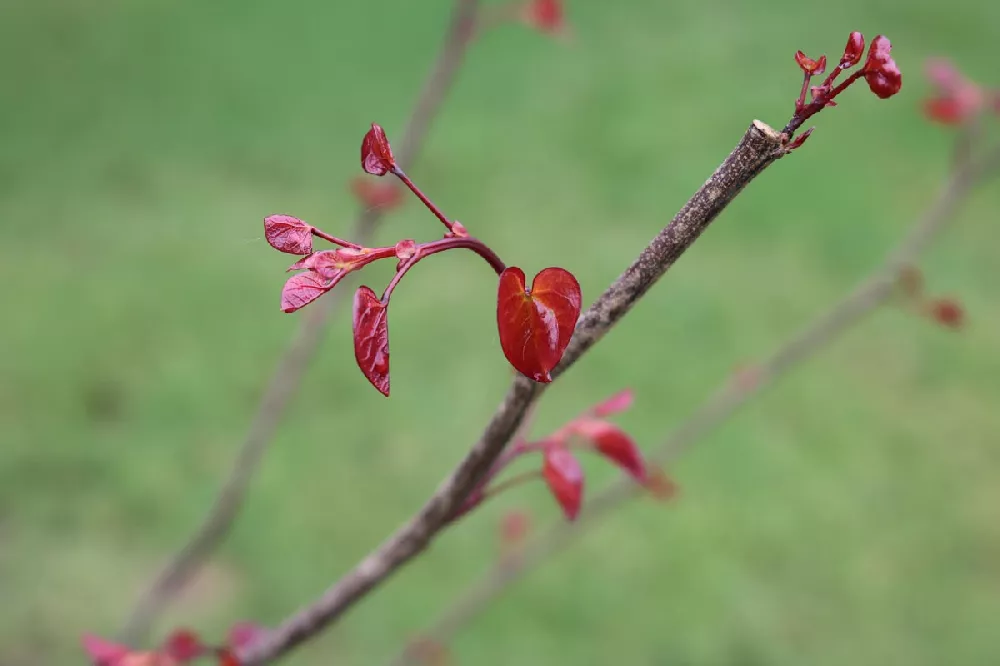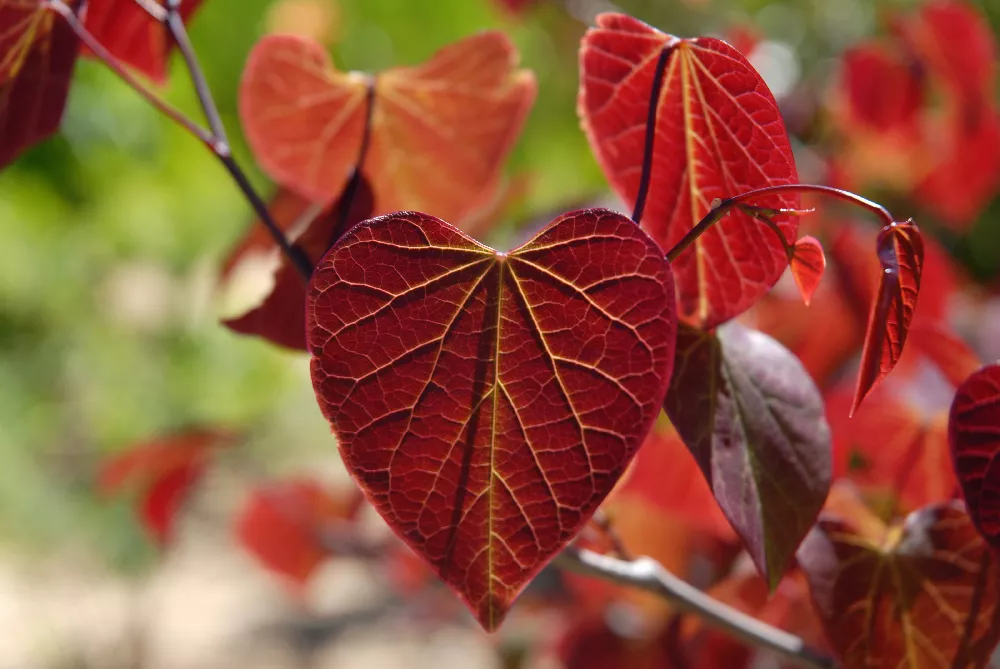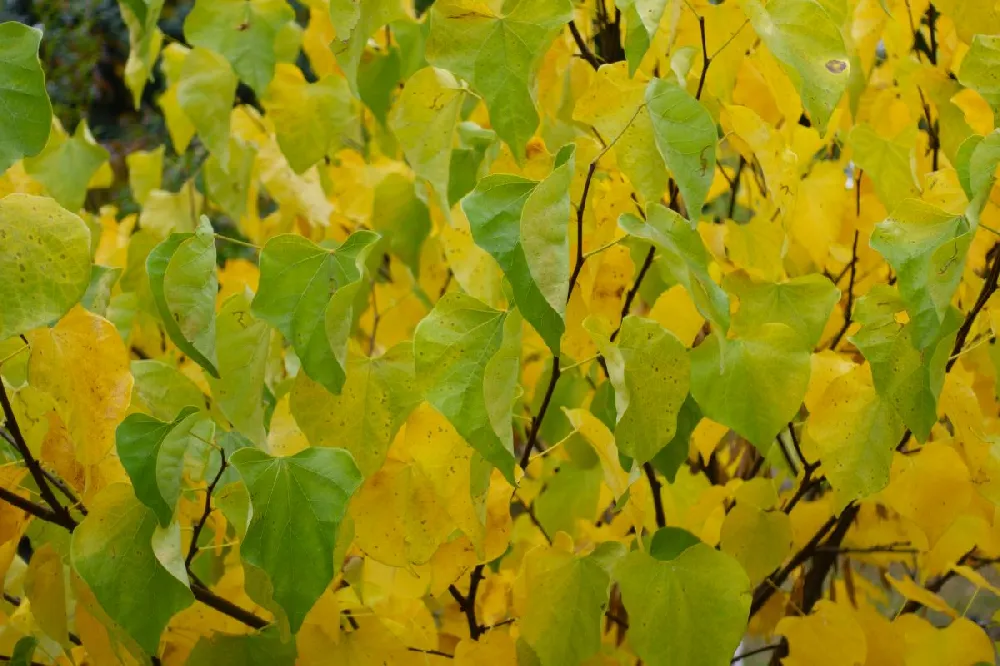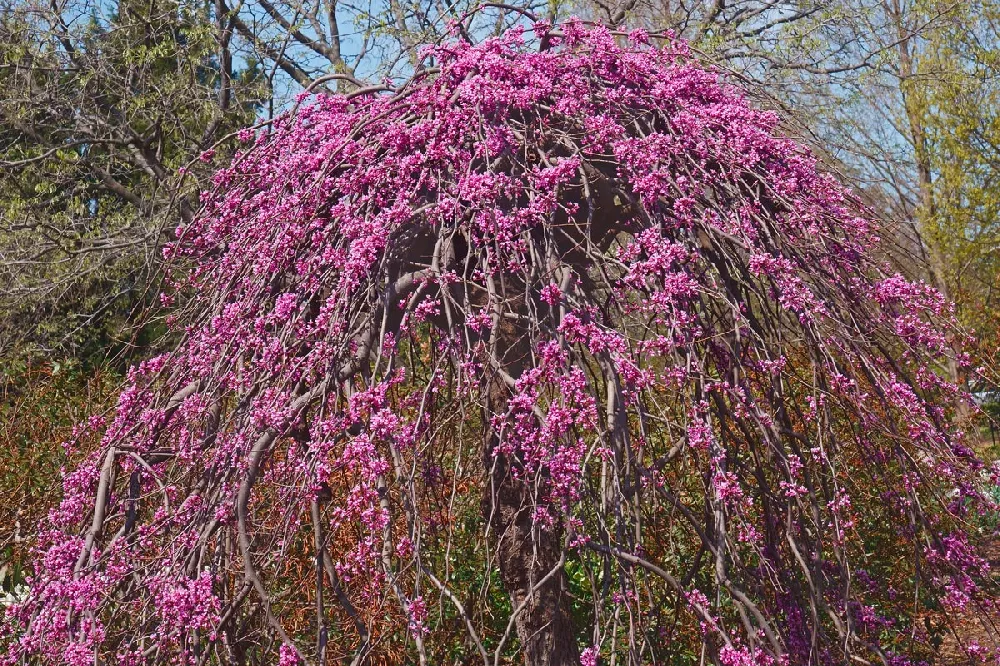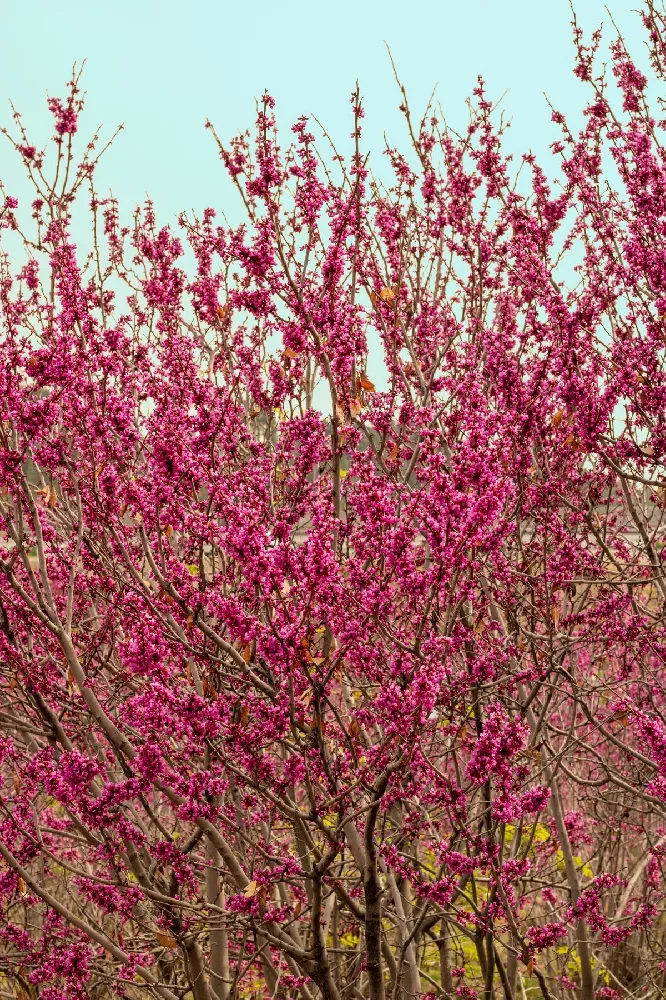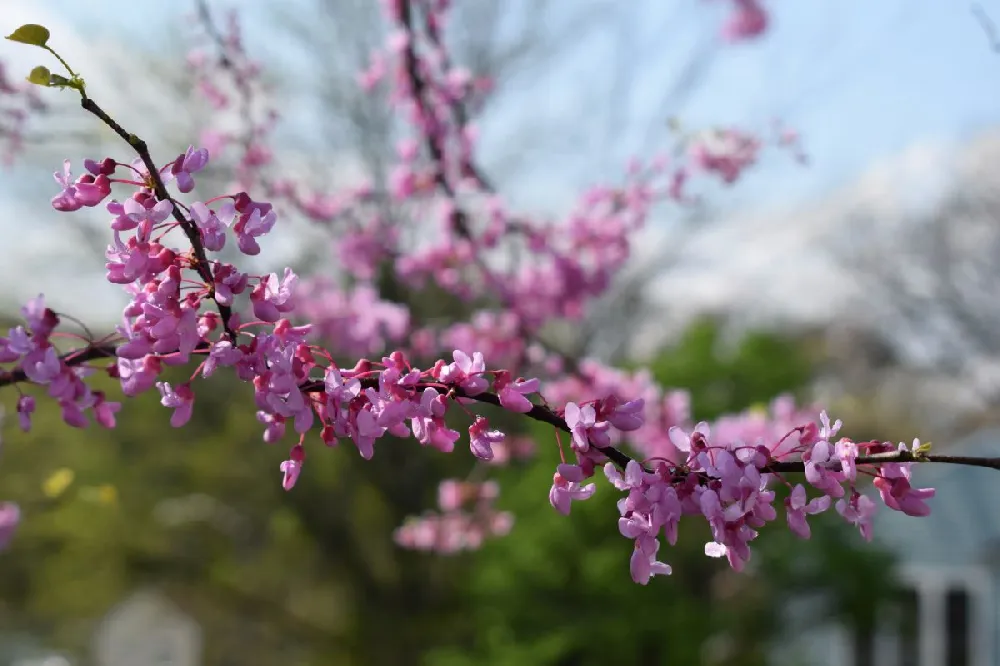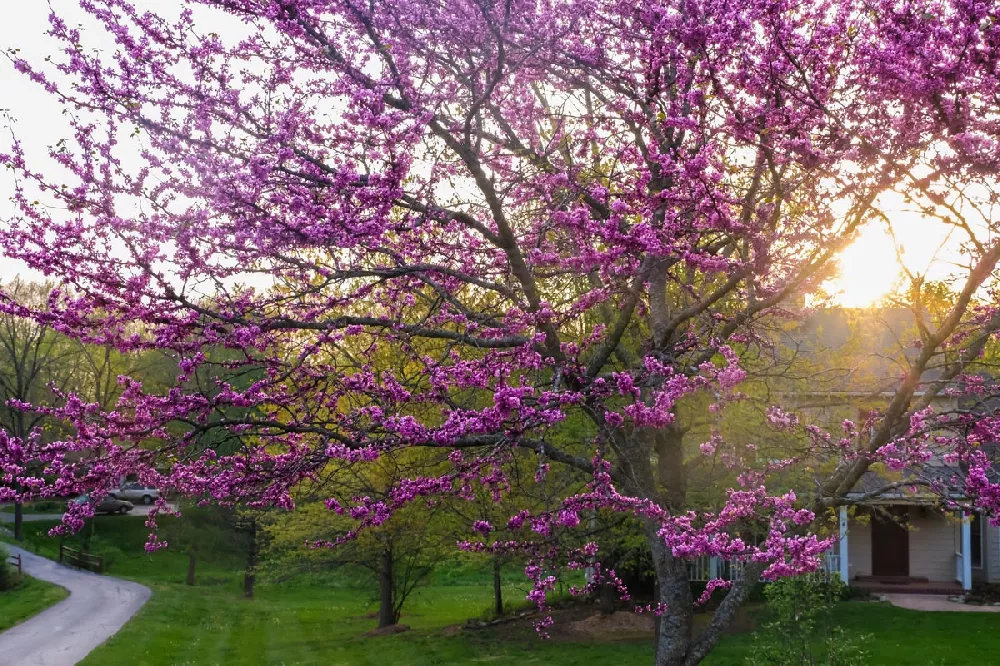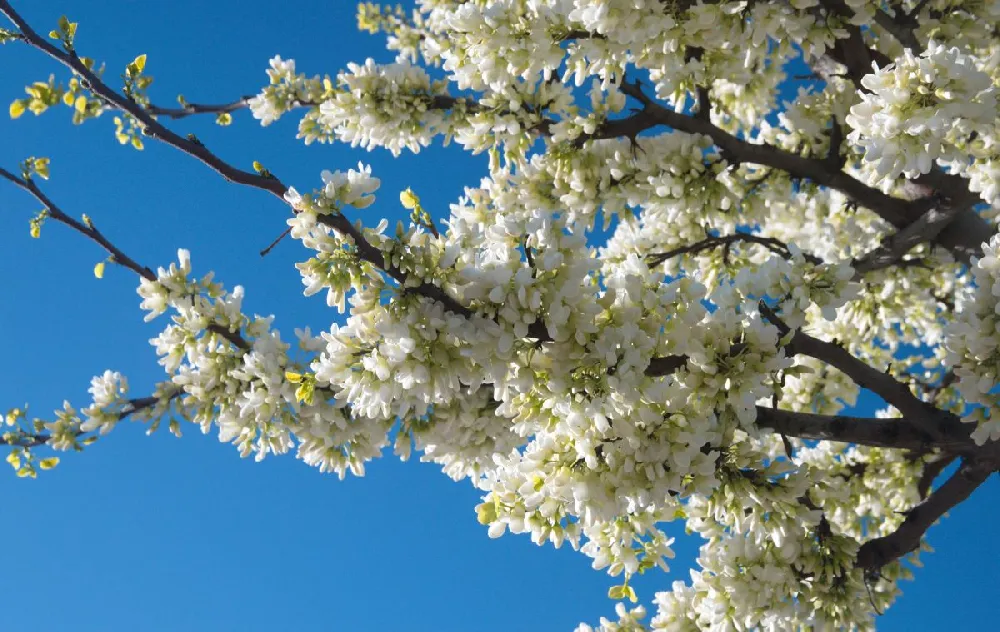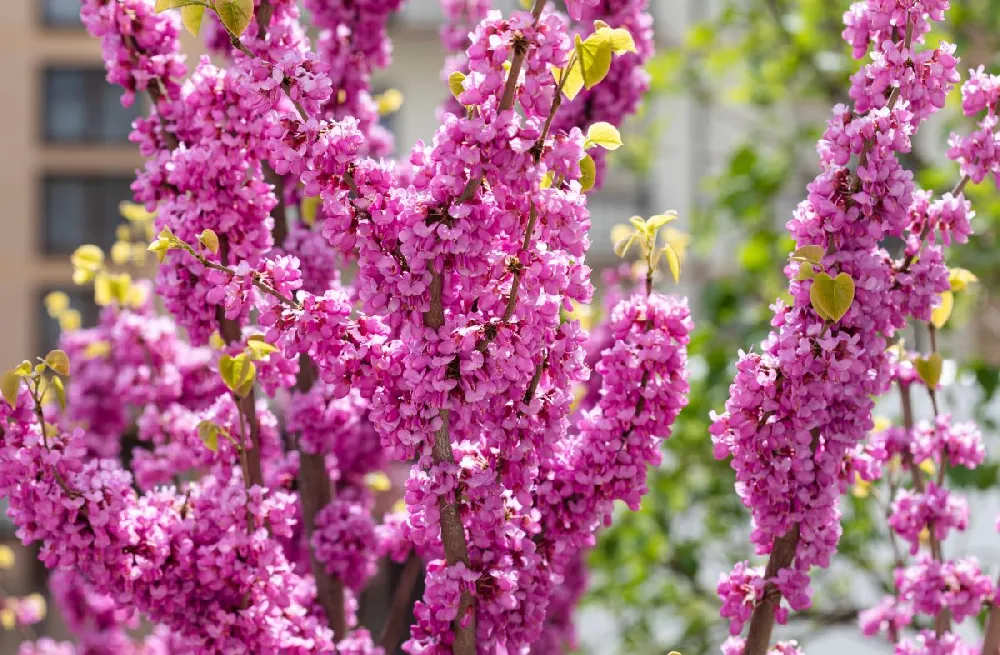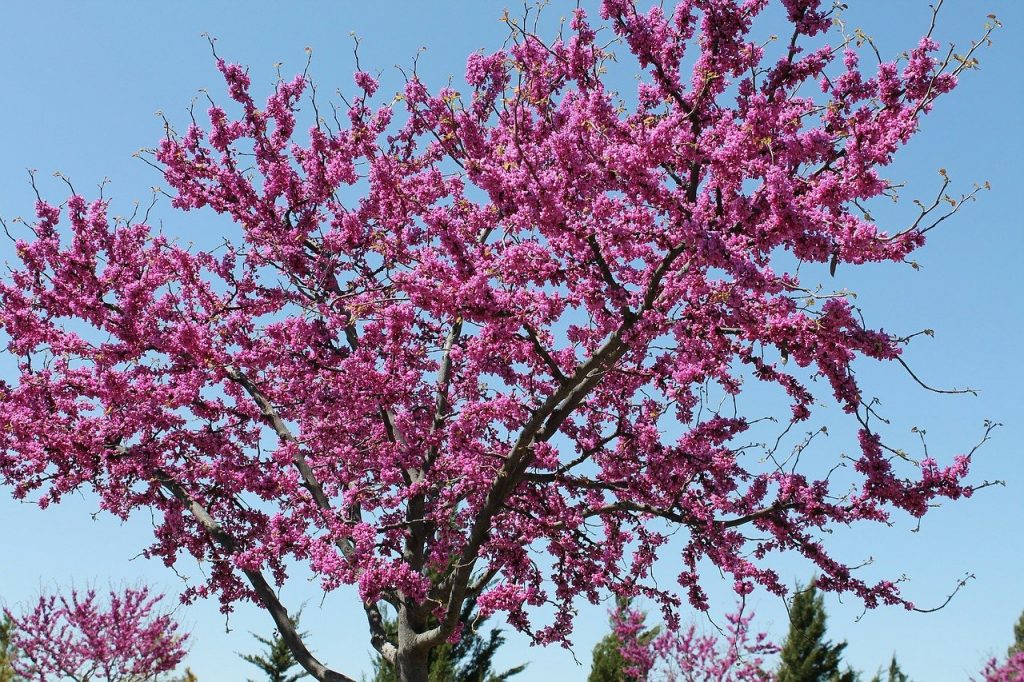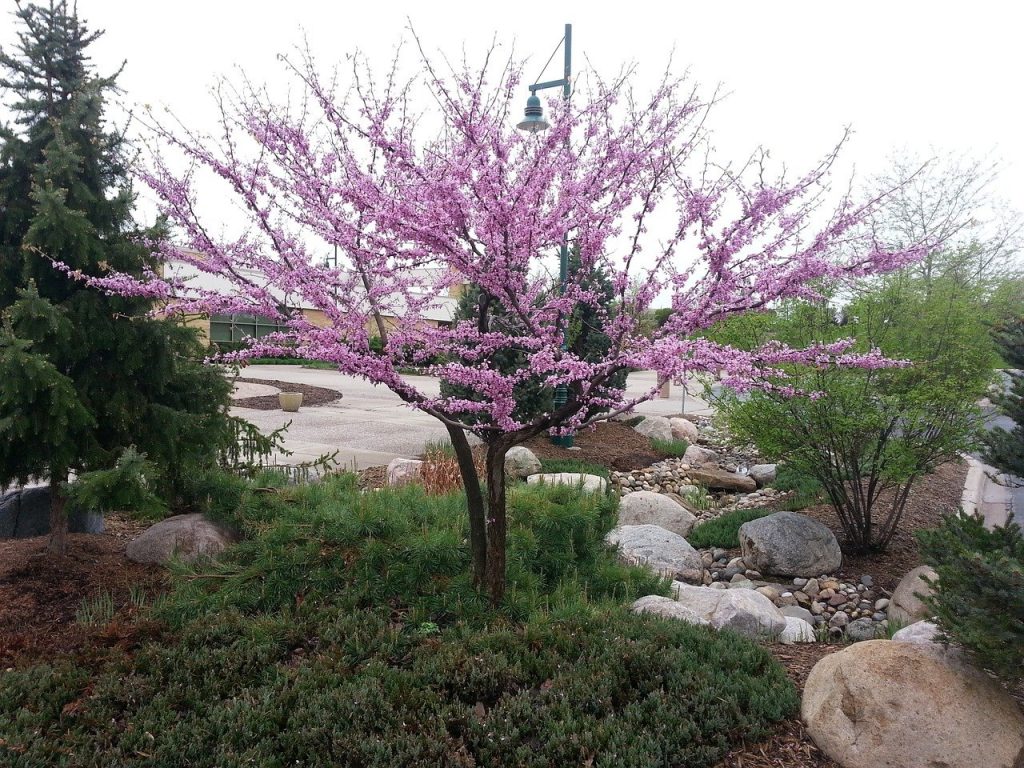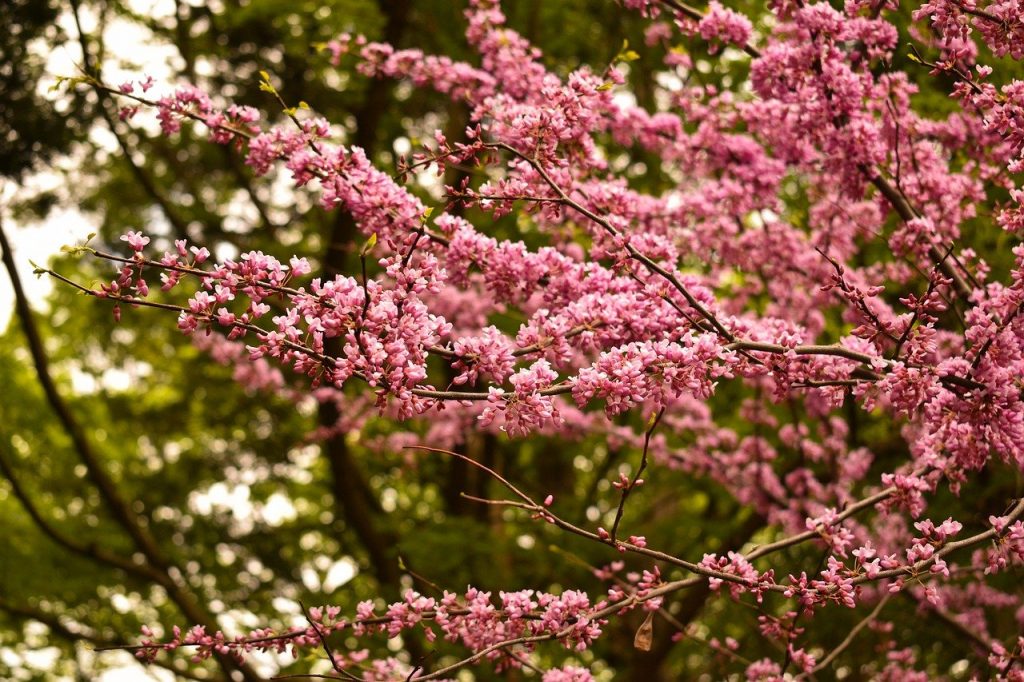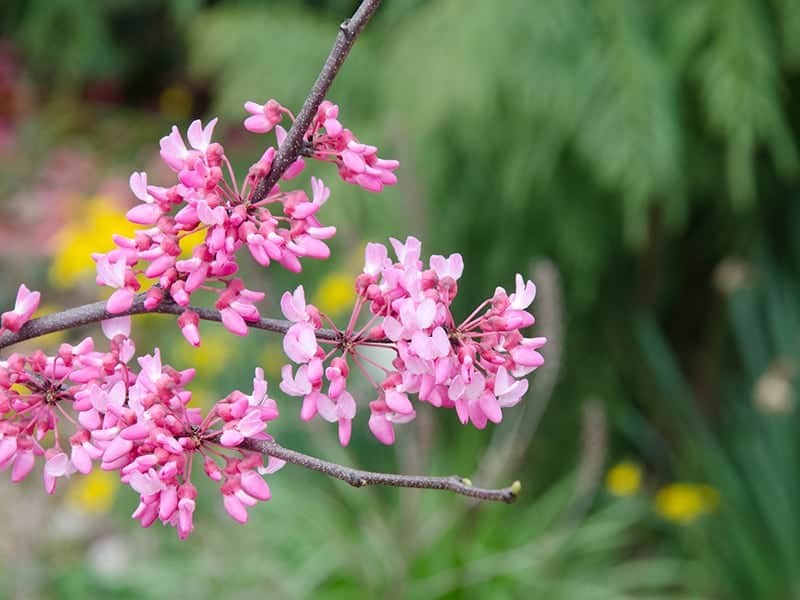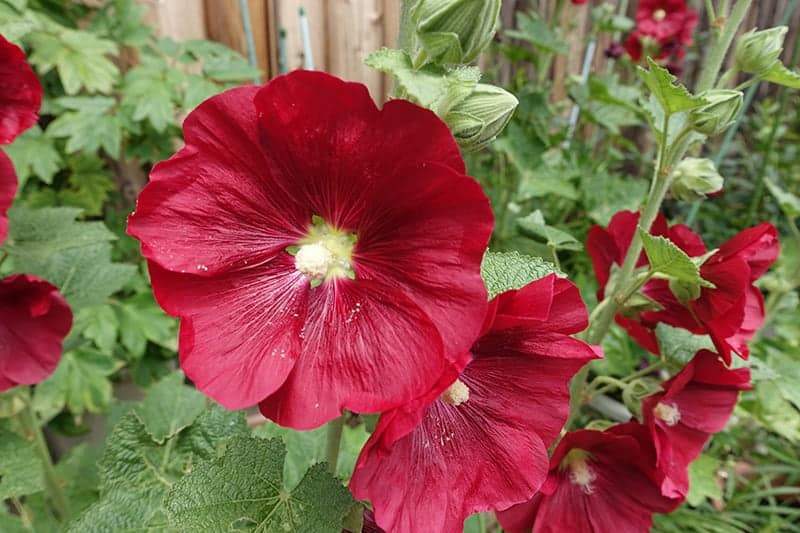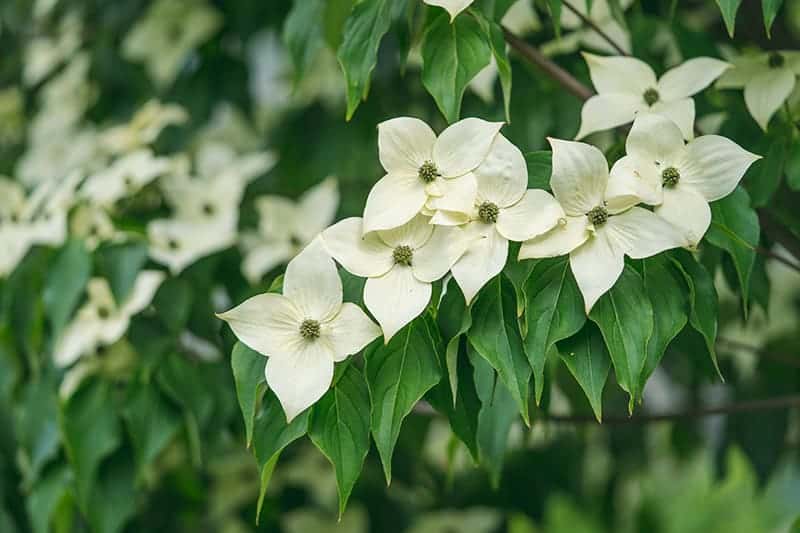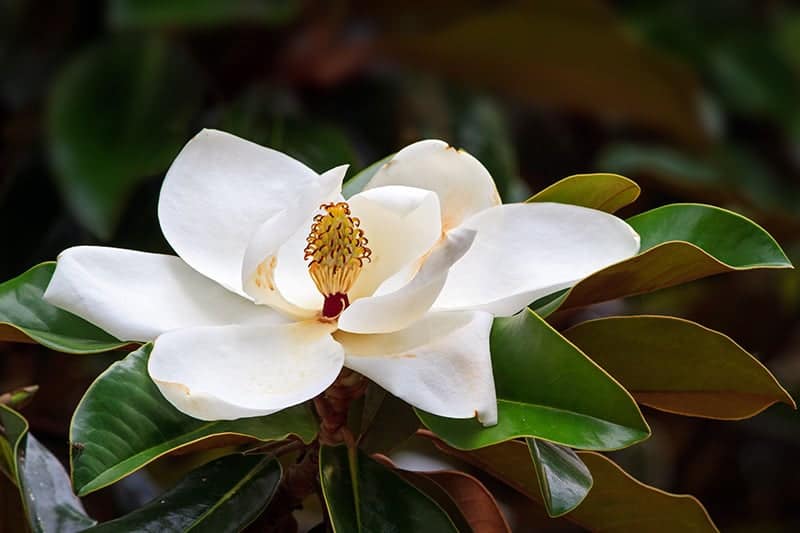- Home >
- Redbud Trees
Redbud Trees for Sale
Filters
Price Range
Growing Zones
Plant Type
Flower Color
Sunlight
Mature Height
Plant Characteristics
18 Results
-
Growing Zone(s): 5-9$101.95
$169.95Save up to 40% -
Growing Zone(s): 5-8$101.95
$169.95Save up to 40% -
Growing Zone(s): 5-8$95.95
$159.95Save up to 40% -
Growing Zone(s): 5-9$149.95
$179.95Save up to 16% -
Growing Zone(s): 5-9$149.95
-
Growing Zone(s): 5-9$101.95
$169.95Save up to 40% -
Growing Zone(s): 5-9$169.95
-
Growing Zone(s): 6-9$189.95
-
Growing Zone(s): 5-9$189.95
-
Growing Zone(s): 5-8$79.95
$159.95Save up to 50% -
Growing Zone(s): 5-9$95.95
$159.95Save up to 40% -
Growing Zone(s): 6-9$154.95
Redbud Trees – Buying & Growing Guide
Seeing a redbud tree in bloom is like listening to a Betthoven symphony — it just takes your breath away. At other times of the year, a redbud is merely a solid, pleasant addition to your garden landscape, but in spring, its glorious pink blossoms will stop you in your tracks.
How to Grow Redbud Trees
How to plant redbud trees
Redbud trees can be planted in USDA Hardiness Zones 4-8, and are best planted in early spring, once the ground has thawed but before the trees have broken dormancy. They like well-drained soil in full sun or light shade, with soil that is slightly alkaline (a pH of around 7.5 is good).
If you are planting multiple redbuds, note that they can reach 30 feet in height with a similar spread, so give them adequate space (25-35 feet between trees), and avoid planting too close to buildings or other structures.
Dig a hole that’s twice the width of the root ball and just as deep. Unwrap or unpot the sapling and break up the roots so that there are none circling the root ball, which would eventually strangle the tree. Place it in the hole, with the juncture where the roots meet the trunk slightly above ground level. Backfill with compost-enriched soil, tamping down as you go. Water your tree well, with about 15 gallons of water.
How to achieve maximum results
The Eastern redbud is native to the East Coast region of the U.S., and thrives in conditions that are common there for understory trees: partial shade, protection from the wind, and soil that drains well and is rich in organic matter. One way you can ensure maximum results is by mulching carefully around your tree with bark chips, shredded leaves, or other organic matter. Keep the area within three to four feet of the trunk free of weeds, so they’re not competing for water and nutrients.
How to Care for Redbud Trees
Watering and nutrients
When newly planted, your redbud tree will need water every few days, but once established, the trees will tolerate dry soil unless it becomes parched during a drought. Trees planted in full sun will need more water than those in partial shade, and you can lessen the need for watering by applying a thick layer of organic mulch out to the tree’s drip line.
Redbuds have no special fertilization requirements. In the spring, a light application of a slow-release, balanced fertilizer formulated for landscape trees and shrubs would be more than enough for your trees. An organic mulch placed around the tree will also provide a slow release of nutrients throughout the year.
Pollination
Redbuds are a primary source of early season nectar for a variety of bee types, including honeybees, carpenter bees, and mason bees. The flowers produce seed pods which look somewhat like pea pods — and that’s not surprising since redbuds are in the same family as beans and peas.
Pruning
You should prune your redbuds in the fall, well after they have flowered. First, eliminate broken, crossed, and diseased branches. Cut out suckers that have a tendency to form at the base of the trunk. Then prune to eliminate, if possible, weak V-shaped branch crotches. These tend to crack and break, and are best cut back to a stronger branch.
Pests, diseases, and animals
The main diseases that impact redbuds are leaf anthracnose, botryosphaerie canker, and verticillium wilt. Minimise the chances that your trees will be impacted by sterilizing your clippers before using them as well as cleaning up all debris from around the tree. Pruning off diseased wood may help, as well.
Redbuds are prone to attack by several species of wood borer, as well as mites and scale insects. Insecticides can help in these cases. It’s also a good idea to encourage beneficial insects by planting flowers that appeal to them. Your county extension officer can suggest specific options for your region.
Types of Redbud Trees
1. Forest Pansy (Cercis canadensis)
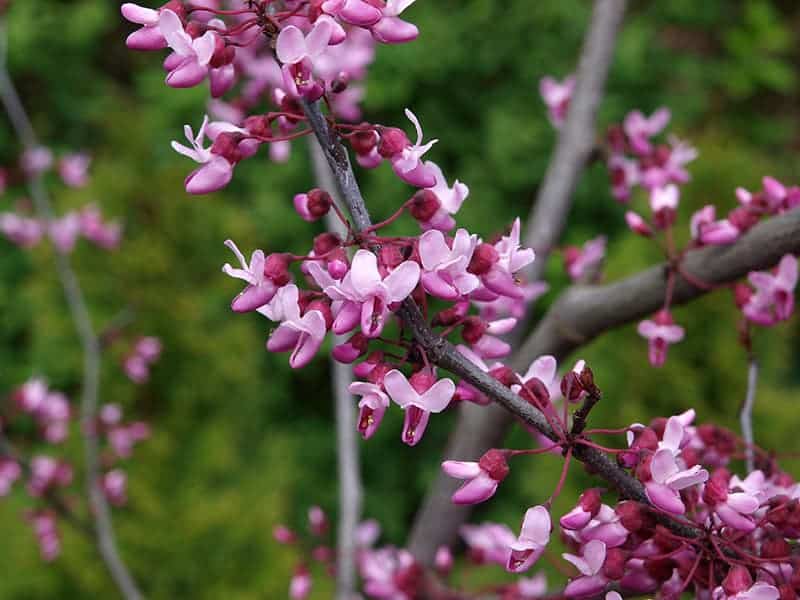
Mature Size: Up to 30 feet tall
Hardiness Zone: 5- 9
Light: Full sun to partial shade
Water: Maintain consistent moisture
Soil: Fertile well-draining
Flower Color: Pink
Special Features: Large attractive foliage
This deciduous plant can be grown as a large shrub or small tree. It typically grows to between 20 and 30 feet tall, spreading wider than it is tall to between 25 and 35 feet.
The pink flowers bloom in early spring, covering the previously bare tree with small pea-shaped blossoms. The foliage arrives several weeks later in shades of purple and red. The leaves are broad, measuring around 5 inches across, and they are heart-shaped with a glossy finish. They develop into rich shades of orange and bronze later in the year, adding fall interest to wherever this plant grows.
The tree grows easily in fertile soils that have a consistent level of moisture. Though the tree is suitable for growing in partial shade, it will bloom most abundantly in a position of full sun. However, it is recommended that the plant be offered afternoon shade in hot climates to protect it.
This tree has won the prestigious Award of Garden Merit from the Royal Horticultural Society.
2. Western Redbud (Cercis occidentalis)
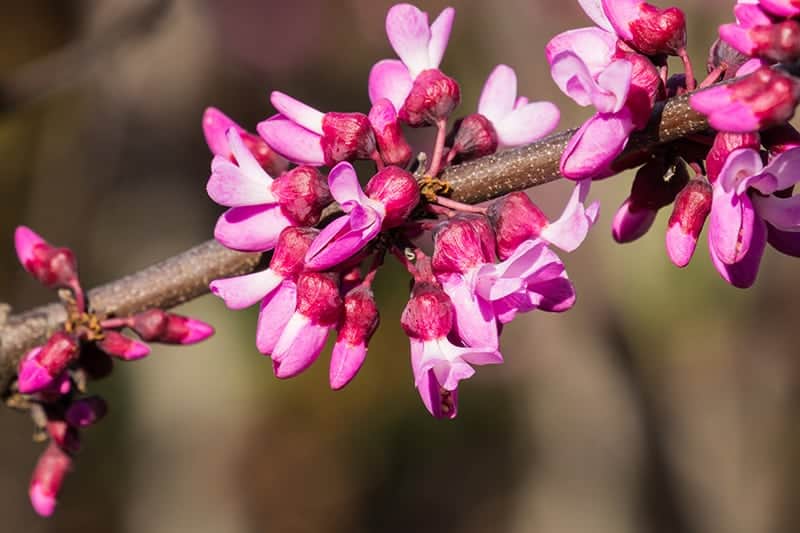
Mature Size: Up to 15 feet tall
Hardiness Zone: 6- 9
Light: Full sun to partial shade
Water: Drought tolerant
Soil: Well-draining
Flower Color: Magenta
Special Features: Purple seed pods
This deciduous Redbud is commonly grown as both a shrub and a small multi-stemmed tree. It blooms in spring before any of the leaves have arrived, with purple-pink flowers covering the silver branches. As the flowers fade in the summer, they are replaced by purple seed pods, which are so bright that they give the impression of the tree having bloomed twice.
The foliage of the tree starts out as a shimmering bright green, which develops to a darker blue-green in the summer months. Leaves are loosely heart-shaped, coming to a rounded tip instead of being pointed. The foliage undergoes several color changes before the year is out, next to golden chartreuse, before finishing in bronze-red in the fall. When the leaves drop, they reveal the stunning silver-gray skeleton of the tree, providing four seasons of interest.
3. Hearts of Gold (Cercis canadensis)
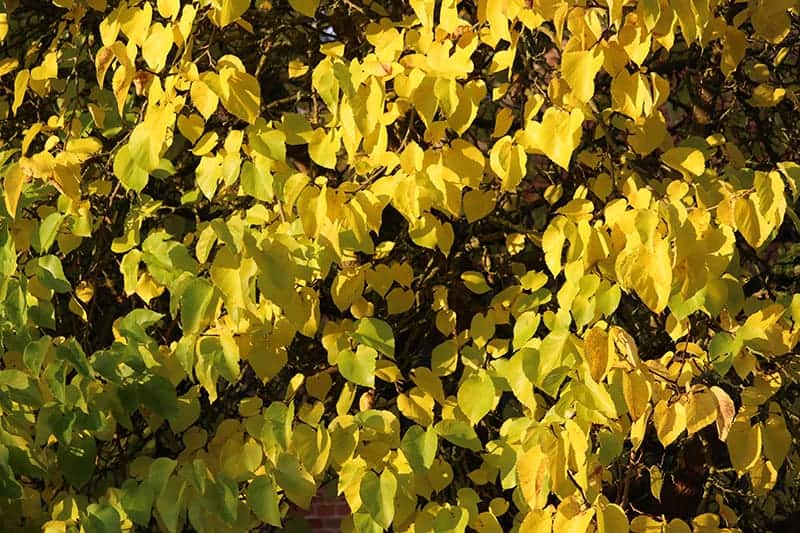
Mature Size: Up to 25 feet tall
Hardiness Zone: 5- 9
Light: Full sun to part shade
Water: Maintain moist soil
Soil: Fertile, well-draining
Flower Color: Lavender
Special Features: Golden foliage
This tree or shrub is visually striking in the spring when its branches are covered with small lavender flowers before any foliage has a chance to grow. The purple flowers bloom in abundance, with a rounded pea-like appeal. The flowers last for a few weeks before the foliage arrives. Leaves start out a copper color, before developing into a bright yellow in the summer. As summer fades, so does the foliage, and the leaves dull to a deeper, darker gold.
Most redbud trees can grow in full sun or partial shade, though they typically suffer from leaf burn if kept in a full sun position in hot climates. However, this type of redbud tree is the exception, as it can thrive in full sun without experiencing any leaf scorching, making it ideal for a bright spot in your garden. It also does well in partial shade, and its golden leaves can bring a welcome brightness to any shaded areas (Gardenia).
4. Tennessee Pink (Cercis canadensis)
Credit to scadwell
Mature Size: Up to 12 feet tall
Hardiness Zone: 5- 9
Light: Full sun to partial shade
Water: Maintain moist soil
Soil: Well-draining, rich
Flower Color: Pink
Special Features: Small size
This redbud tree is a dwarf variety, growing to a maximum of just 12 feet tall. This makes it an ideal specimen tree in smaller gardens, and it would also work well when grown in a container. This tree does not like to be disturbed, so ensure you plant it in a good spot because it will not respond well if you try to move it later down the line.
The flowers of this tree bloom several weeks before leaves emerge, adorning the branches with bright pink delicate blooms. The flowers last for 2 or 3 weeks, after which time semi-glossy heart-shaped leaves appear. These leaves unfurl in a dark shade of green, which progresses to yellow when fall arrives.
The branches of the tree grow in a way that creates a dome-shaped canopy, which can be seen even more clearly when the leaves drop. This tree is attractive even when bare, thanks to its elegant silhouette.
5. Eastern Redbud (Cercis canadensis)
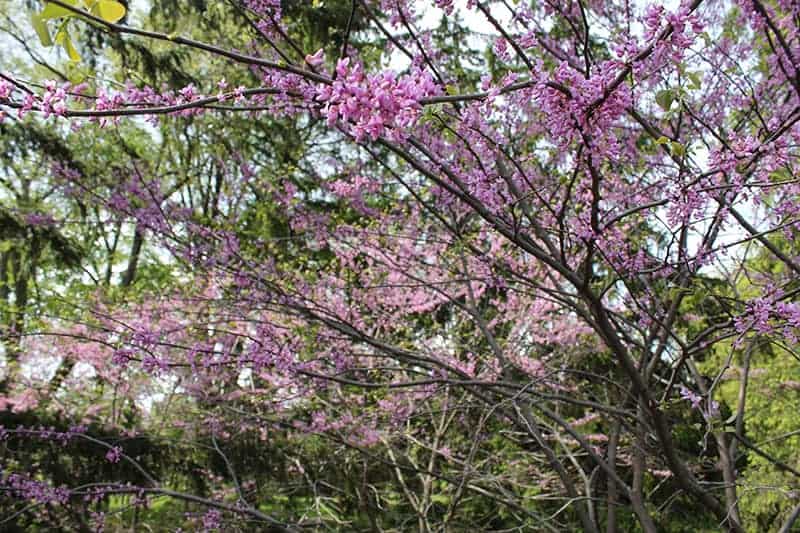
Mature Size: Up to 30 feet tall
Hardiness Zone: 4-9
Light: Full sun to partial shade
Water: Maintain moist soil
Soil: Well-draining, fertile
Flower Color: Pink
Special Features: State tree of Oklahoma
This tree is native to North America, growing from Ontario in Canada all the way down to Florida in the US. It is the state tree of Oklahoma, where it can be seen lining many of the streets and is sometimes referred to by the name ‘Covey.’
This tree often grows with a multi-trunked tree, giving it a slender and elegant appeal. The branches spread out wider than the height of the tree, sometimes as much as 35 feet across. The flowers of the tree bloom in spring before the foliage emerges, covering the branches in small blooms in various shades of pink. Flowers then develop into small pods of seeds, which are brown in color.
When leaves arrive, they are rounded off heart-shapes, in a lime green flushed with red. As the year progresses and summer arrives, the foliage transforms to dark green and then fades to yellow in the fall before dropping off and leaving the tree bare. This beautiful tree is attractive to butterflies and tends to be resistant to most pests (Missouri Botanical Garden).
6. Chinese Redbud (Cercis chinensis)
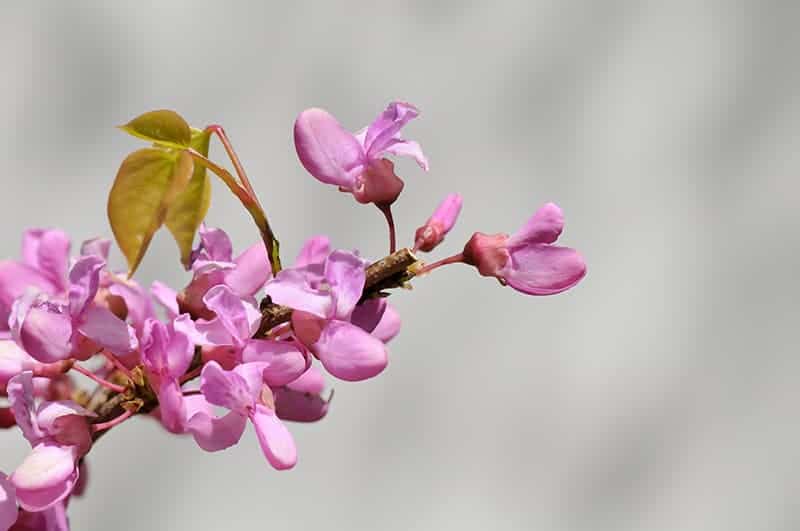
Mature Size: Up to 12 feet tall
Hardiness Zone: 6- 9
Light: Full sun to partial shade
Water: Maintain moist soil
Soil: Well-draining
Flower Color: Pink-purple
Special Features: Flowers profusely
This tree flowers in the spring, its branches covered in dense clusters of pink-purple blooms. Though all redbuds flower quite heavily and reliably, the Chinese Redbud is renowned for being the most prolific bloomer among the redbuds. Its elegant branches are practically smothered in small blossoms for 2 or 3 weeks before the foliage emerges.
Leaves of this tree are large and glossy, in the shape of hearts. They start out green flushed with red, eventually turning to yellow in the fall before dropping off. This tree is the recipient of the Award of Garden Merit from the Royal Horticultural Society.
7. Ace of Hearts (Cercis canadensis)
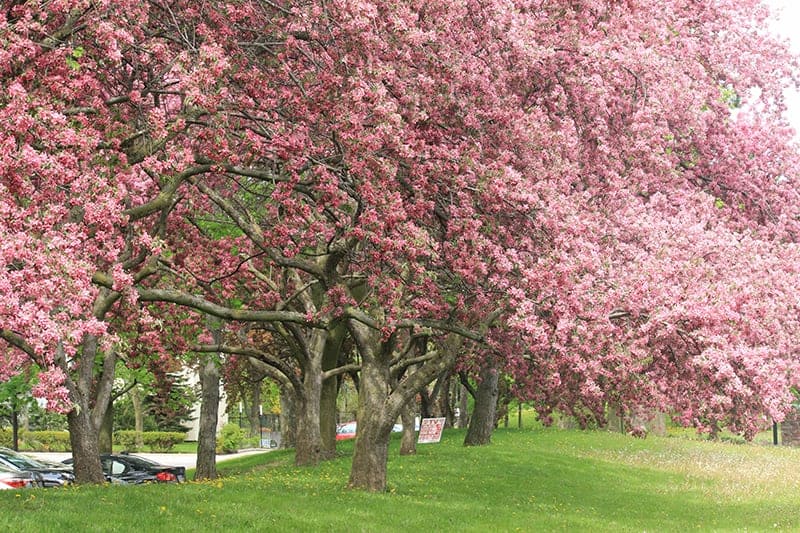
Mature Size: Up to 12 feet tall
Hardiness Zone: 5-9
Light: Full sun to partial shade
Water: Average moisture
Soil: Well-draining
Flower Color: Purple-red
Special Features: Purple-red flowers
This redbud has a compact habit that can grow to a maximum of 12 feet tall and 15 feet wide. It produces densely packed branches that create an umbrella-shaped canopy. In the spring, before leaves have emerged, the tree goes into full bloom with a mass of purple-red flowers decorating the branches. The small and pretty blossoms last for up to 3 weeks before the foliage takes center stage. Leaves emerge as dark green hearts, which then develop to yellow in the fall.
As a small tree, this works well in compact gardens, in beds, or borders. It can also grow well in a container pot. Position it in a full sun spot to encourage the best flower production or situate it in partial shade if you experience especially hot summers, as this could burn the leaves. Maintain moist and even soil, paying extra attention to soil moisture levels if you plant the tree in a pot, as these tend to dry out quicker than if planted directly into the ground.
The tree is popular among pollinators such as bees, butterflies and hummingbirds and will help to encourage this wildlife to visit your garden.
8. Merlot (Cercis canadensis)
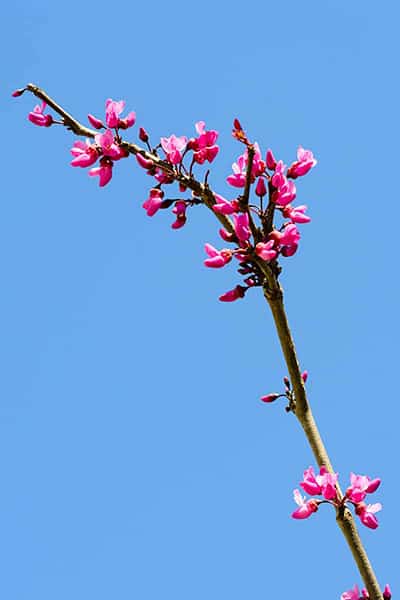
Mature Size: Up to 12 feet tall
Hardiness Zone: 6-9
Light: Full sun to partial shade
Water: Drought tolerant
Soil: Well-draining, fertile
Flower Color: Dark pink
Special Features: Drought and heat tolerant
This tree is a hybrid, combining the Texas Redbud and the Forest Pansy Redbud. It is renowned for its striking dark leaves and its ability to withstand heat and periods of drought. It is a dwarf variety, growing to a maximum of 12 feet in height and blooms in spring before the leaves emerge.
Flowers are a shade of dark pink and are small and dainty. Blooms last for a few weeks, at which time, the foliage makes an appearance. As you might expect from the name of this redbud, the leaves are a deep shade of red, similar to the color of red wine. They tend to be on the small side, vaguely heart-shaped, and with a semi-gloss finish.
The exceptional thing about this tree is that unlike most redbuds, the leaves do not exhibit any signs of burn when kept in direct sun during very hot summers. It is also able to tolerate periods of drought, which is uncommon for redbud trees. Though it is able to cope with drought, this tree grows best if moist soil is maintained.
9. Judas Tree (Cercis siliquastrum)
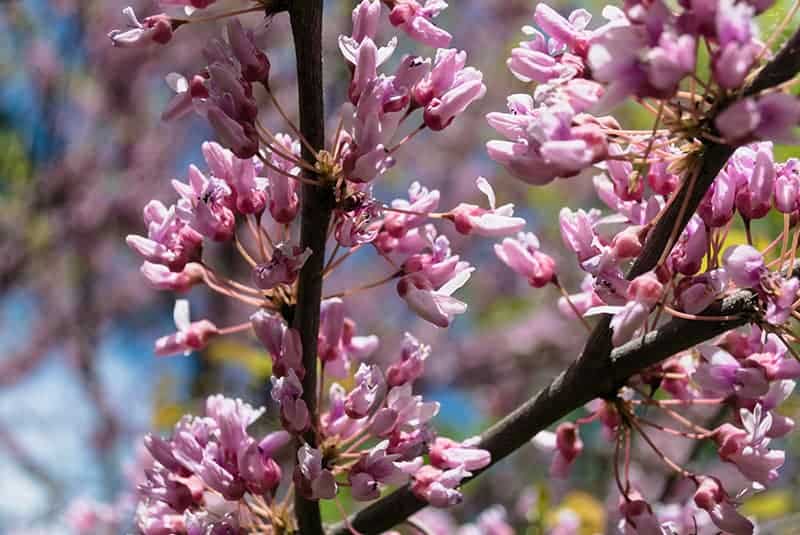
Mature Size: Up to 25 feet tall
Hardiness Zone: 6-9
Light: Full sun to partial shade
Water: Maintain moist soil
Soil: Rich, well-draining
Flower Color: Pink
Special Features: Purple seed pods
This tree is native to the eastern Mediterranean region and is therefore sometimes referred to as the Mediterranean Redbud. It is a deciduous tree that branches out to create a dome-like canopy overhead. The flowers bloom in clusters in spring prior to the arrival of the tree’s foliage, and these blossoms tend to be larger than those found on other redbud trees.
The pink flowers last for several weeks before turning into purple dangling seed pods. The seed pods add further interest to the tree and can last right up to winter. The foliage of this tree starts out copper-red, maturing to deep green in the summer and yellow-green in the fall.
10. Ruby Falls (Cercis canadensis)
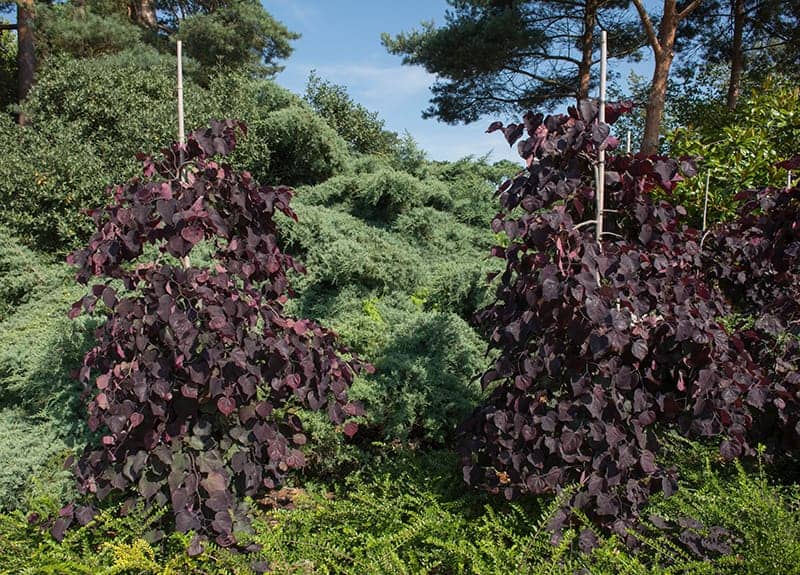
Mature Size: Up to 6 feet tall
Hardiness Zone: 5-9
Light: Full sun to partial shade
Water: Maintain moist soil
Soil: Well-draining
Flower Color: Red-pink
Special Features: Winner of the Award of Garden Merit from the Royal Horticultural Society
This award-winning tree is petite in stature and is the smallest of all the redbud trees at a maximum height of 6 feet and a maximum spread of 4 feet. It is noted for its weeping branches that drape downwards. These branches come alive with masses of ruby-colored flowers in the spring, which bloom ahead of the leaves’ arrival and give the tree its fitting name of ‘Ruby Falls.’
The foliage of this tree starts out dark red, with glossy heart-shaped leaves. These develop into a dark green color throughout the summer.
